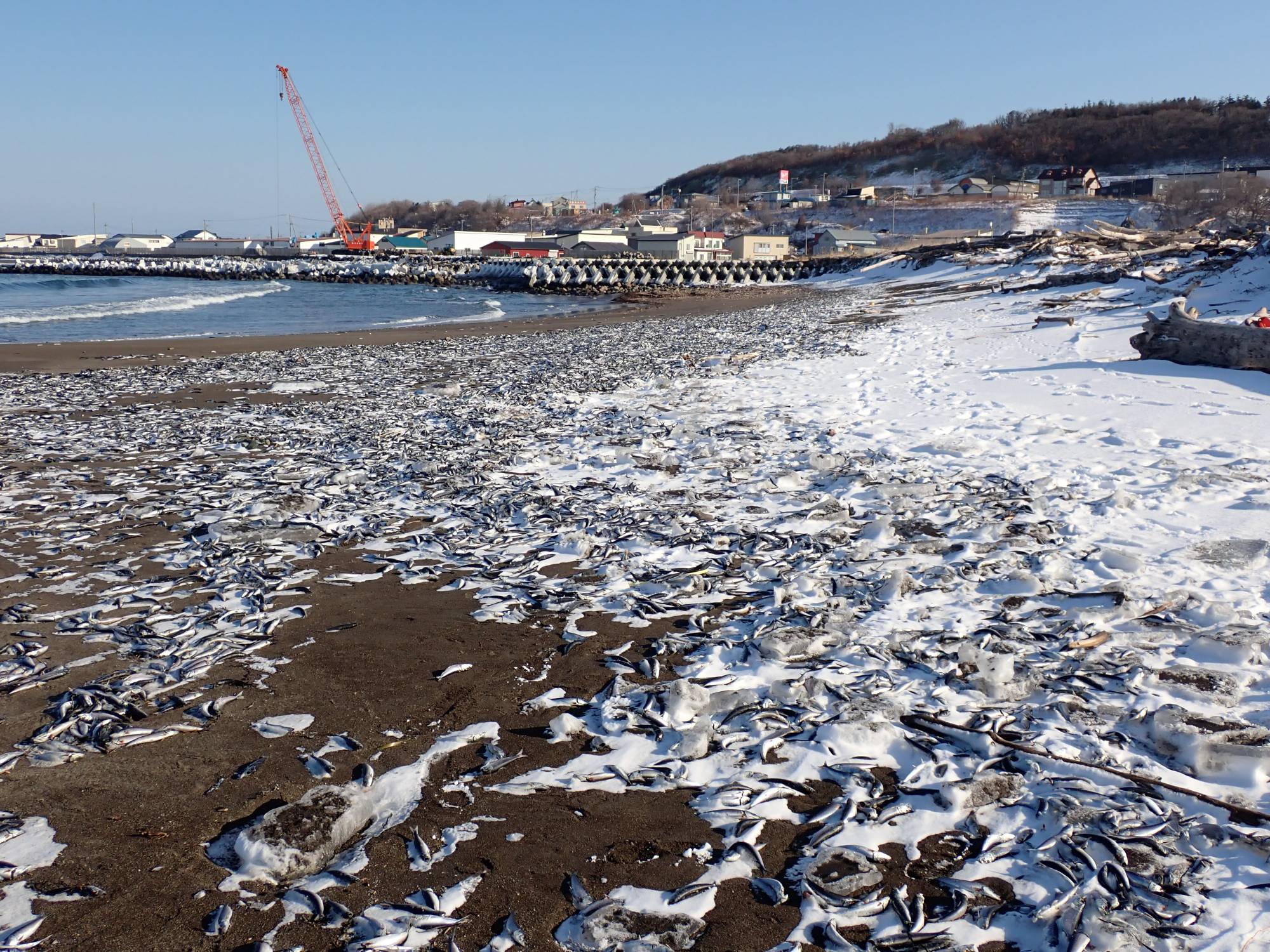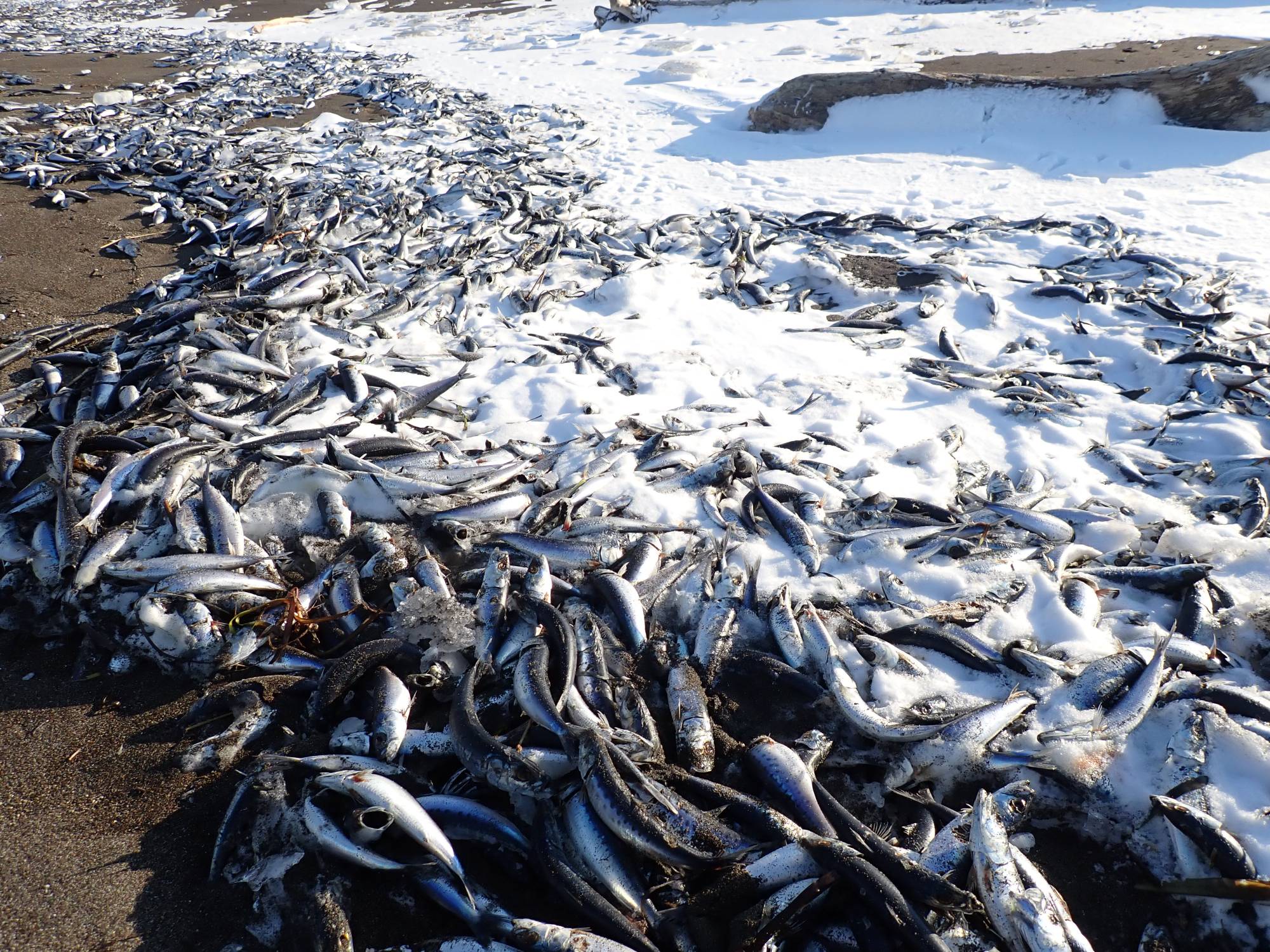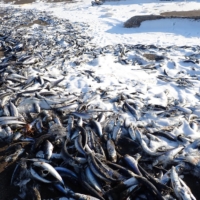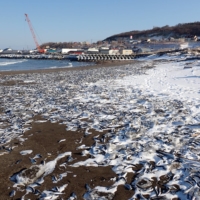Frozen sardines have washed up on the beaches of three towns in Hokkaido, with the fishes' bodies covering several kilometers on the Sea of Okhotsk coast.
On Sunday, local residents gathered in the towns of Shari and Omu to see the spectacle, with some rushing to bring the fish home.
Just a couple of days prior, there was a similar sighting in Tokoro in the city of Kitami. It’s estimated that there were around 20 tons of the dead, frozen fish, with each about 20 centimeters in size, according to Yuki Matsui from the Okhotsk Regional Development Bureau, who recently visited the site himself.
The Abashiri Fisheries Research Institute, a fisheries research organization in Hokkaido, has floated the slow migration of the fish as a possible cause of the mass deaths.
“It’s likely some of the Japanese sardines, which should have already moved south and left the Sea of Okhotsk, were left behind in the area. It can be assumed that the fish died from exposure to water temperatures below their optimum temperature for survival due to the drop in water temperature,” said Nobuyuki Tanaka, chief researcher at the institution.
The base temperature for sardine survival is 7 degrees Celsius, but the surface temperature in the surrounding waters is said to be at 3 C.

Normally, sardines migrate around Hokkaido in the summer and head south in the fall, but it is possible that the washed-up fish stayed off the Sea of Okhotsk coast.
Still, their specific cause of death remains unknown.
The same phenomenon occurred both last year and five years ago near the city of Wakkanai, Hokkaido, after a heavy snowstorm.



















With your current subscription plan you can comment on stories. However, before writing your first comment, please create a display name in the Profile section of your subscriber account page.